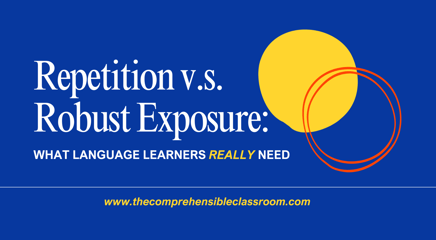A little background...
Before switching to TPRS, I was a 'Cooperative Learning' teacher. While my students were very comfortable speaking, they spoke incorrectly over and over and over again. With 35 students in a class, it is very difficult to monitor for accuracy when so many are speaking at once! I am still undoing the damage that my current eighth graders did to themselves back in sixth grade. HOWEVER, I still believe that it is very important to incorporate communicative activities into a TPRS classroom. They are a great 'brain break' from storytelling, they allow the kids to get up and move around, and they help students become more comfortable producing oral language. One of the structures that one of my classes was working on this week was "le duele la cabeza", and we talked about backward verbs in grammar pop-ups. We compared the verb "doler" to "gustar", and today we played "Human Bingo" to practice choosing between the singular and plural forms of gustar.
The activity...
Preparation:
- Choose a structure to practice. A verb usually works best so that you can write different options to complete the predicate in each box.
- Design a BINGO board. You don't need to make it traditional (5x5) if you can't think of enough comprehensible items to write in the boxes.
- Fill each box with a possible completion for the predicate. Ex: If you are practicing the verb "has", fill each box with something that students may or may not have. If it's "is", fill each box with adjectives. In my example, "likes", I filled each box with things that students might like.
- Leave several boxes empty so that students can add their own ideas to the mix.
In class:
- Student A approaches Student B and asks in the TL, "Do you like __ (one of the things from the box)?"
- Student B responds "Yes, I like..." or "No, I don't like..." If yes, he/she signs the corresponding box, and Student A is on his or her way to a BINGO! If no, Student A can ask the same student about another box OR move on to another classmate.
- Each student can only sign any given classmate's paper once (unless you don't have enough students in your class--then just make them leave and come back to each other after talking to someone else).
- Give students a goal: one BINGO, two BINGOs, blackout (fill the whole board), four corners, etc. When they meet the goal, give them some kind of recognition (a star on the paper, an entry in the weekly drawing, etc.) and have them continue until most of their classmates have finished as well.
- After you finish the activity, have students report the information that they learned in writing. (Ex: Mary likes dogs. Bob likes Beyoncé. etc.)
Make sure that you demonstrate the activity to students before letting them loose, or you will have mass confusion!!!!




